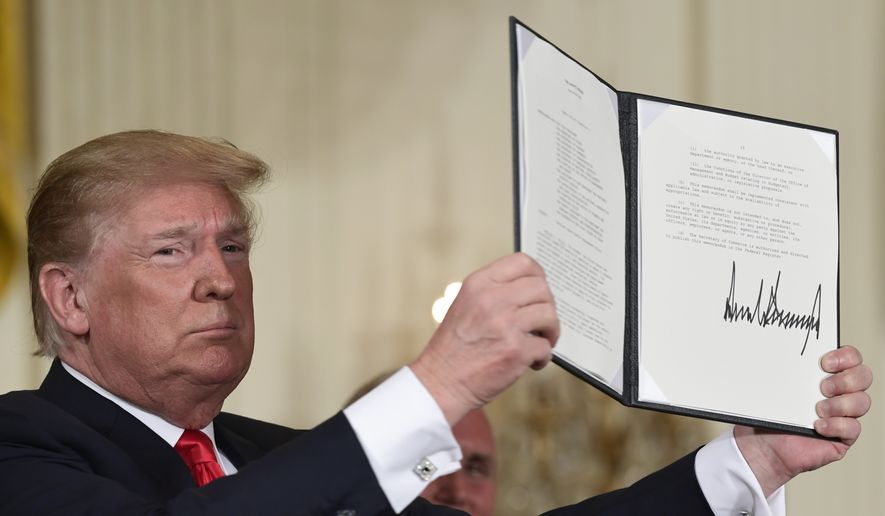Washington’s defense doctrine to maintain overwhelming military superiority in space is now null and void, in the face of the growing challenge posed by Russia and China, said the White House’s pick to lead the new U.S. Space Command.
Air Force Gen. John Raymond told the House Armed Services Committee Tuesday that the previously uncontested U.S. control of space — the basic assumption that underpins the Pentagon’s strategy — is no longer reality.
“Historically we have been operating in a benign domain [in space] and the doctrine that we have … over the past few years has been all about providing services in that benign environment,” the general said during Tuesday’s confirmation hearing to become the first chief of the revived Space Command in over a decade.
“That is no longer good enough” in the face of surging Russian and Chinese capabilities in outer space, he said.
“It is no longer good enough to launch a satellite, get it on orbit and work the [intelligence] piece. You have to be able to protect and defend it, and you also have to be able to fight it — and that requires a different doctrine that is being developed today,” he told lawmakers.
Gen. Raymond’s nomination is the first to go before Congress since the 1999 nomination of Air Force Gen. Ralph Eberhart to lead Space Command command, which was decommissioned three years later in 2002.
The Trump White House reinstituted the command, putting it on par with organizations like U.S. Central Command and U.S. Cyber Command as part of Mr. Trump’s push to create the U.S. Space Force as a new military branch. Supporters of the new Space Force military branch argue Russian and Chinese efforts to militarize space are already chipping away at America’s dominance.
Chinese investment in military and civilian space programs is outpacing spending levels by Russia and others, but is still dwarfed by Washington’s $48 billion annual expenditure on space efforts, according to figures released in January by the Organization for Economic Cooperation and Development.
But that spending gap with the U.S. is quickly closing as Beijing continues to push the envelope on military space technology, Pentagon officials say. “China’s space program continues to mature rapidly,” American defense officials wrote in its 2019 assessment of the People’s Liberation Army or PLA.
“China continues development of multiple counterspace capabilities designed to degrade and deny adversary use of space-based assets during a crisis or conflict,” they added.
While committee members agreed with Gen. Raymond that revamping U.S. Space Command would be an important first step, several lawmakers expressed concerns over how the command will work with existing space operations handled by the Air Force and the intelligence community.
“General Raymond, you are nominated to be the commander of a joint command, conducting joint operations. Yet the overwhelming majority of personnel who work in space are members of the Air Force,” Rhode Island Sen. Jack Reed, the committee’s ranking Democrat, pressed the nominee on Tuesday.
“I am interested in how you will meet the joint mandate … when almost all space activities will be occurring in one service,” he added.
Mr. Reed also sought details on how the new command would coordinate with the National Reconnaissance Office (NRO), the intelligence directorate responsible for fielding and operating America’s constellation of spy satellites.
“The NRO remains independent of the Space Command and Space Force, leaving a seam in our national security space,” the Rhode Island Democrat said Tuesday.
Committee chairman Sen. Jim Inhofe prodded Gen. Raymond further on the integration of the existing regional combat commands, like Central Command and U.S. Indo-Pacific Command, into Space Command operations.
“The space warfighting domain is an area surrounding the earth at altitudes equal to or greater than 100 kilometers,” the Oklahoma Republican said, noting that distance would surpass any of the geographical borders where the other combat commands operate.
“When forces are deployed in another geographic combatant commander’s [area] they will remain assigned to and under control of the commander of U.S. Space Command,” Sen. Inhofe said. “Do you see any kind of a problem or competition with other combatant commanders that are out there?” he asked?
In response, the four-star general said that under his watch, Space Command would fight and function like all the other joint combat commands within the Pentagon.
“Space is a joint warfighting business, [and] you have to have joint integration,” Gen. Raymond said, adding the refurbished Space Command will include component commands from each of the services, similar to existing joint combatant commands.
“They will have operators in each one of those [components], they develop capabilities that are integral to their service” under the larger umbrella of Space Command, the four-star general added.
“We cannot win this fight [in space] without this joint team,” Gen. Raymond said, noting that fight has gotten more dangerous as China and Russia continue to hone their own combat capabilities in space.
• Carlo Muñoz can be reached at cmunoz@washingtontimes.com.




Please read our comment policy before commenting.